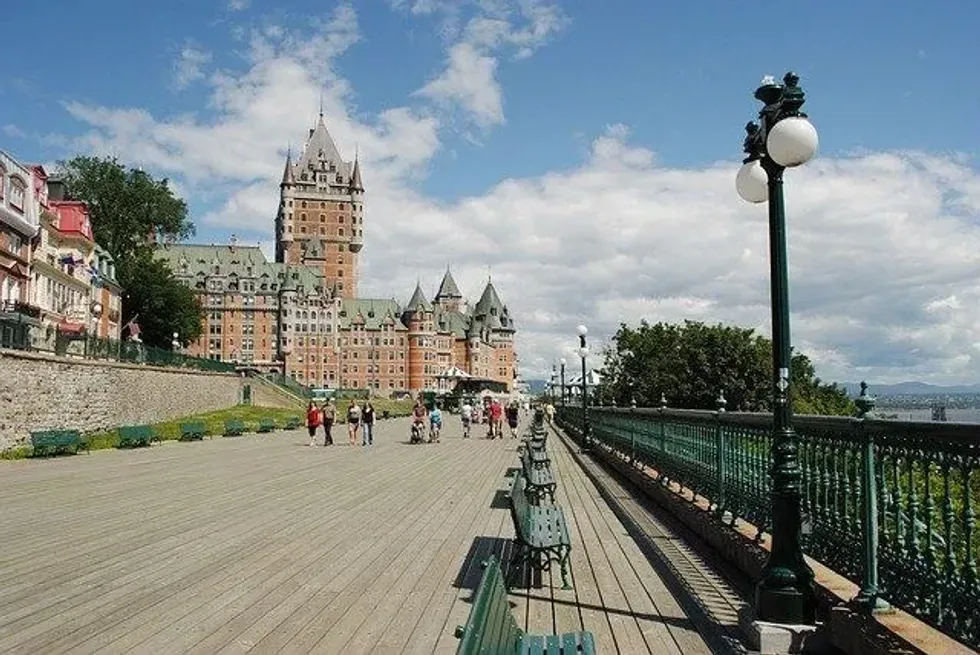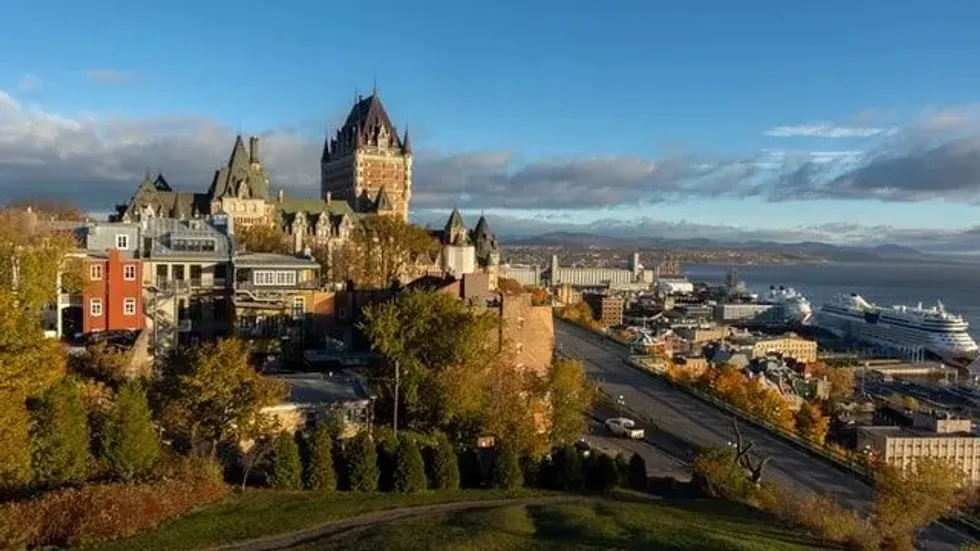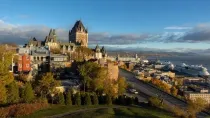39 Fun Quebec Facts: Learn All About The Canadian Province
Quebec is a huge region, and not surprisingly, the majority of this province remains uninhabited.
Quebec as a province is so very vast that it is bigger than many countries of the world. Quebec is three times bigger than France and 41 times bigger than the Netherlands. Some of the other famous Canadian provinces are Ontario and Alberta.
The land along the River St. Lawrence is the most populated area in Quebec that includes Quebec City and Montreal. The St. Lawrence Lowlands is very fertile, and the first settlers (including the first Europeans) came to this place and settled down while the original inhabitants were already living here.
The migrants named it 'New France,' and to this day, their legacy of the French language and culture is prominent in the province.
Most people living in Quebec speak both English and French, though French has been the official language of the province since 1974 and remains so to date. Quebec is also known to have one of the longest life expectancies in Canada. People here live longer than in any other province, except British Columbia and Ontario.
The history of Quebec City, including the famed walls, makes it a splendid tourist attraction. People coming from Europe to Quebec City find the city architecture similar to many popular and historic European cities.
History Of Quebec
Quebec is the oldest French-speaking community in North America.
The name comes from its early variations: 'Québecq' and 'Kébec.'
Jacques Cartier was a French explorer who attempted to create a permanent settlement in the area around the cliff-lined gap of the Saint Lawrence River.
A local indigenous population was already living in the area that is today around modern Quebec City.
Jacques built a fort in 1535, and the settlement took form by 1541. But, surprisingly, the settlement also disbanded within a year.
Another French explorer Samuel de Champlain came in 1608 and gave shape to the settlement again, and the area got its name, 'Québec.'
The place became the colonial outpost for the New France in North America and was the administrative seat for decades.
There is a Cathedral-Basilica of Notre-Dame de Quebec, which means 'Our Lady of the Quebec City.' The Roman Catholic archdiocese is one of the oldest in this region and is, therefore, a national historic site of Canada.
Samuel built the fort, which exists till today, named Place Royale. The beginning led to a flourishing community of French people settling down, and that further led to Quebec City.
Governor Callières was successful in bringing about calm in the region by the Great Peace of Montreal in the early 1700s. They brought about an alliance between the warring factions of Algonquian and New France, and the Iroquis ended with the treaty.
Quebec City has spread to a vast area now. The working-class areas traditionally evolved around the lower town across the Saint Charles River, Vanier, and Limilou, which are located in the lower town below the old Quebec. Quebec's downtown is considered to be the central part of the town from Saint Roch to the Quebec City Bridge.
Location And Weather Of Quebec
The location of Quebec has had a significant bearing on its history and culture.
Quebec City is located in the valley where the Saint Lawrence River meets the St. Charles River. The river valley is very fertile as the two rivers bring in rich soil. The area does not have too much elevation and is flat and low-lying against the Laurentian Mountains.
The name of the province finds its roots in the Algonquin word 'kébec.' It means 'where the river narrows.' This indicates the area where the river narrows to a cliff-lined gap, where the settlers first came to Quebec City.
Due to its location and settlements of English and French people, Canada was also somewhat involved in the First World War. Some of the English Canadian inhabitants enlisted to fight. However, French Canadians did not have to enlist as they were not connected to the British Empire, but some French Canadians still enlisted.
Another interesting fact is that the Quebec population also has some other races, like Irish and other European ancestries. Irish inhabitants of France were sent here, and people from many other countries migrated to Quebec as well.
Quebec has an extreme and cold climate. Winters are very cold and long, with plenty of snow most of the time. Summers are warm but very short.
Yukon is relatively warm, whereas Nunavut is the coldest part.
The St. Lawrence River freezes in winter, with the temperature dropping to -22 F (-30 C).

Famous Tourist Spots In Quebec
Quebec City is a walled city, and the walls are made of stones. This reflects the old style of construction and adds a lot of charm to the place. Let's take a look at some of the most popular tourist destinations in the province.
Quebec City is known to be one of the oldest European settlements in North America, much before Canada gained independence.
The historic imprints can be seen in the building structures around the city. These buildings look like those from any old European city and remind people of the time when the settlers first came into Canada.
The fortified wall of the city has appeared among one of the UNESCO World Heritage Sites since 1985.
The old town has many houses made of stones and is still going strong. The new part has houses built of wood in the American and Canadian styles.
The cliff is the location of The Upper Town, which is still regarded as the religious and administrative center. It has many churches and convents that you can visit, including the Dauphine Redoubt and the Citadel.
Citadel was built to house the British Garrison till 1871. You can see The Citadelle of Quebec, which is an active military installation for the armed forces of Canada even after many decades. This is a star-shaped structure and part of the stone fortification.
Did you know 70% of the maple syrup produced in the world comes from Canada? Also, 90% of that quantity comes from the Quebec Province alone. The golden syrup is the specialty of the country and this province.
The production of maple syrup starts at the end of the winter season, and the raw material comes from sugar maples.
Another special culinary delight is the pate Chinois or the Chinese pie. One story about the origin of this unique food item is that the Chinese cooks made it for the French Canadian workers while the construction of North American Railroads was going on.
Those people took back the pie and its recipe with them when they returned to Quebec.
The St. Lawrence River cutting across southern Quebec from east to west is one of North America's most crucial waterways and the lifeline of Quebec.
Ice canoes were the best mode of transport in the old days when people wanted to cross this river. Today the canoe race is the most famous event during the Quebec Carnival that is organized every year in February. It is also an official competition.
The Quebec Winter Carnival is the oldest annual festival in Canada. You can enjoy sports like skating, sledding, skiing, and many interesting activities like snow sculpting, parades, and shows. People come from across the globe to partake in the festival.
The special attraction apart from the canoe race is the Ice Hotel, and its design changes every year.
With early settlers came religious missionaries and Augustine nuns, who established a hospital in old Quebec. The nuns' cells are intact even today, and you can sleep in one of those to get a unique experience.
Hotel-Dieu de Quebec National Historic Site of Canada was the first building on the North American continent that combined religious and medical purposes.
Another impressive building here is the Château Frontenac of old Quebec City, which has the recognition of the 'most photographed hotel in the world' and even holds a Guinness World Record for the same reason!
This structure was built between 1892-1893 by the Canadian Pacific Railway and was designated a National Historic Site of Canada after 100 years in 1981.
Molson Coors Canada, located in Montreal, is the oldest brewery in North America. It was founded in 1786, and it's still functioning from its original place.
Universities And Colleges Of Quebec
Canada is today an attractive destination for international students due to its educational system and liberal policies of immigration. The culture and openness here play a crucial role in inviting students from across the world who move here irrespective of linguistic differences.
Quebec Province has its share of educational institutions that invite and host students from around the world. Colleges and universities in Quebec have been actively engaging with international students and helping them better their careers.
Quebec offers programs in technology, business, and healthcare through its academic institutes and the programs are highly competitive. Students become employment-ready with the amazing support system at the colleges. Career consultants at these colleges also help them with employment and immigration services.
Another positive aspect is that universities in Quebec are bilingual; that is, they provide educational programs in English and French alike. Students from French-speaking countries find this very convenient.
The universities have flexible programs, and that helps students as they can choose a program according to their interests and capabilities. They can finetune the subjects and change courses with prior permission from the administration, as these are dynamic programs. The convenience allows them to be comfortable and study while building a good career.
Montreal is one of the most well-known cities in Quebec. It has a very vibrant culture that is a mix of the old colonial times and modern technological advances.
It has many wonderful activities happening throughout the year that help the students to learn more about the world.
Students also like museums and shows that acquaint them with historical aspects and the artistic side of the country.
The provincial government of Canada hires most of the students here as private companies are still primarily located in other provinces, like Ontario and British Columbia.
Students coming from other countries must know that French is mandatory in this province according to Law 101, the official charter of the French language. This law was passed in 1977 to help make French the official language in education, economy, trade, and communication to the extent possible.
According to this, the commercial communications and some percentage of music on radio must be in French too.
FAQs
How do the cultures of Quebec and Montreal reflect Canada's history?
Quebec City is located in the Canadian province of Quebec. People used to assume that Montreal was the capital city of the province, whereas Quebec City is the capital and the second-largest city located there.
Montreal is the biggest in the province due to its size and population. Both Montreal and Quebec have a similar environment and reflect French culture due to the first settlers here.
The population consists of French-speaking North Americans more than any other.
The Québécois culture has very distinctive features and helps them to bind into a society. Their coat of arms also reflects the political history and cultural influence of the French people.
It has a gold lily on a blue background which represents the French rule. The British rule is represented by a lion on a red background, the Canadian rule is shown using maple leaves, and finally, the motto of the province is in French: 'Je me souviens,' meaning 'I remember' in English.
What is Quebec's official animal?
The snowy owl (Nyctea scandiaca) was adopted as Quebec's official bird in 1987. This is not a nocturnal animal and may be seen during the day also. It is seen as a symbol of the province's support for wildlife protection.
What is Quebec's official tree?
Though Canada is the country of maples, yellow birch is the emblem or special tree of Quebec. It is abundantly found throughout the region and is important for the furniture industry in the province.
What was Quebec originally called?
An interesting fact is that Quebec's original name was Canada. It was the most developed colony between 1534-1763, and its central region too.
When did Quebec join Canada?
Old Québec was one of the founding members of the Dominion of Canada. It joined New Brunswick, Nova Scotia, and Ontario in Confederation on July 1, 1867.
Who created the Quebec flag?
The flag of Quebec is called the Fleurdelisé (lily flowered). The flag comprises a white cross against a blue background, with four white fleurs-de-lis. Maurice Duplessis adopted the flag on behalf of the government of Quebec in 1950. It was the first-ever provincial flag in Canada, and it is still unknown as to who really designed the flag.
What is the capital of Quebec?
The capital of Quebec is Quebec City, though many people assume Montreal as the capital of the province of Quebec. The capital city of this province, Quebec City, is also the second-largest city, while Montreal City is the largest in the province.
We Want Your Photos!
More for You
Bachelor of Commerce specializing in Accounting and Finance, Master of Business Administration

Divya RaghavBachelor of Commerce specializing in Accounting and Finance, Master of Business Administration
With a diverse range of experience in finance, administration, and operations, Divya is a diligent worker known for her attention to detail. Born and raised in Bangalore, she completed her Bachelor's in Commerce from Christ University and is now pursuing an MBA at Narsee Monjee Institute of Management Studies, Bangalore. Along with her professional pursuits, Divya has a passion for baking, dancing, and writing content. She is also an avid animal lover who dedicates her time to volunteering for animal welfare causes.
Disclaimer
1) Kidadl is independent and to make our service free to you the reader we are supported by advertising. We hope you love our recommendations for products and services! What we suggest is selected independently by the Kidadl team. If you purchase using the Buy Now button we may earn a small commission. This does not influence our choices. Prices are correct and items are available at the time the article was published but we cannot guarantee that on the time of reading. Please note that Kidadl is a participant in the Amazon Services LLC Associates Program, an affiliate advertising program designed to provide a means for sites to earn advertising fees by advertising and linking to Amazon. We also link to other websites, but are not responsible for their content.
2) At Kidadl, we strive to recommend the very best activities and events. We will always aim to give you accurate information at the date of publication - however, information does change, so it’s important you do your own research, double-check and make the decision that is right for your family. We recognise that not all activities and ideas are appropriate for all children and families or in all circumstances. Our recommended activities are based on age but these are a guide. We recommend that these ideas are used as inspiration, that ideas are undertaken with appropriate adult supervision, and that each adult uses their own discretion and knowledge of their children to consider the safety and suitability. Kidadl cannot accept liability for the execution of these ideas, and parental supervision is advised at all times, as safety is paramount. Anyone using the information provided by Kidadl does so at their own risk and we can not accept liability if things go wrong.
3) Because we are an educational resource, we have quotes and facts about a range of historical and modern figures. We do not endorse the actions of or rhetoric of all the people included in these collections, but we think they are important for growing minds to learn about under the guidance of parents or guardians.







